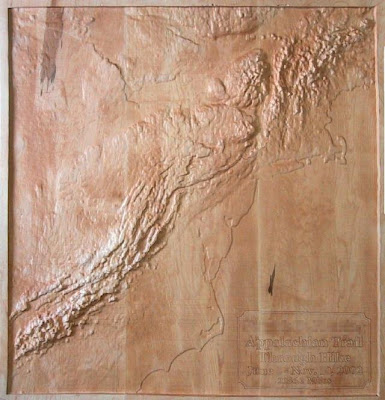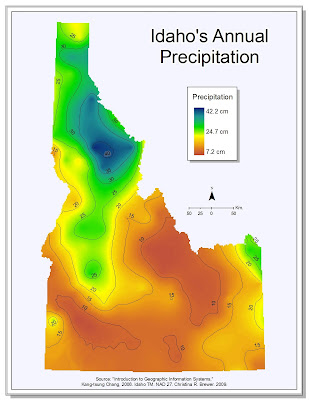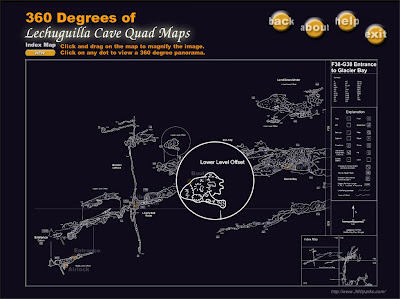Wednesday, April 22, 2009
Map of the Week - National Public Lands Day
The National Public Lands Day web site contains a simple map of the U.S. Clicking on a state will do two things: tell you that state does not contain any sites, or direct the browser to a new page containing information about public lands day sites in that state. The info includes thing such as contact phone number, related website, directions, and a link to a locational map. Perhaps quite a useful tool for those interested in being involved with National Public Lands Day.
Please the following link to see this week's interactive map of the week.
http://www.publiclandsday.org/involved/sites.htm?
Exercise 7

Population Density & Elderly Populations
The following map shows elderly population in Idaho counties using graduated symbols. County population density is portrayed in darkening shades of blue (county background). The map shows a higher number of elderly in the south and northwest portions of the state. The map shows some counties with low population density, but higher numbers of elderly. This may be partially due to density being a function of county size.
The map is limited in the fact that it does not display elderly density, but rather raw quantities. This map give a deceptive picture of the percentage of elderly in each county.

Wednesday, April 15, 2009
Map of the Week - Wood?

Source: http://www.cbsled.com/relief_maps.html
Exercise 6
Annual Precipitation - Kriging

Tuesday, April 7, 2009
Excercise 5
The map layout is somewhat simple in color with some smaller embellishments (legend drop shadow, subdued N. arrow, title masking). I experienced some trouble in working with the legend and related dots for label boxes. I changed the project to a state plane that seemed to better portray the state of Idaho.

Capital City Populations
For this map I decided to leave the legend is frameless, perhaps helping to more closely associate symbols with features. The north arrow is more decorative than my typical choice but perhaps more typical of global mapping. Map elements were used to help sort of frame the globe (legend, credits, N. arrow). I experienced some trouble due to my inexperience with graduated symbol mapping.
Hawaiian & Pacific Islanders, Buffalo NY.
In this map I made use of some color, and a more decorative symbol for the proportional map symbol of this map. I did experienced some trouble in setting up proportional symbols partially due to my lack of experience in this area of map making.
Monday, April 6, 2009
Map of the Week - Lechuguilla Cave


